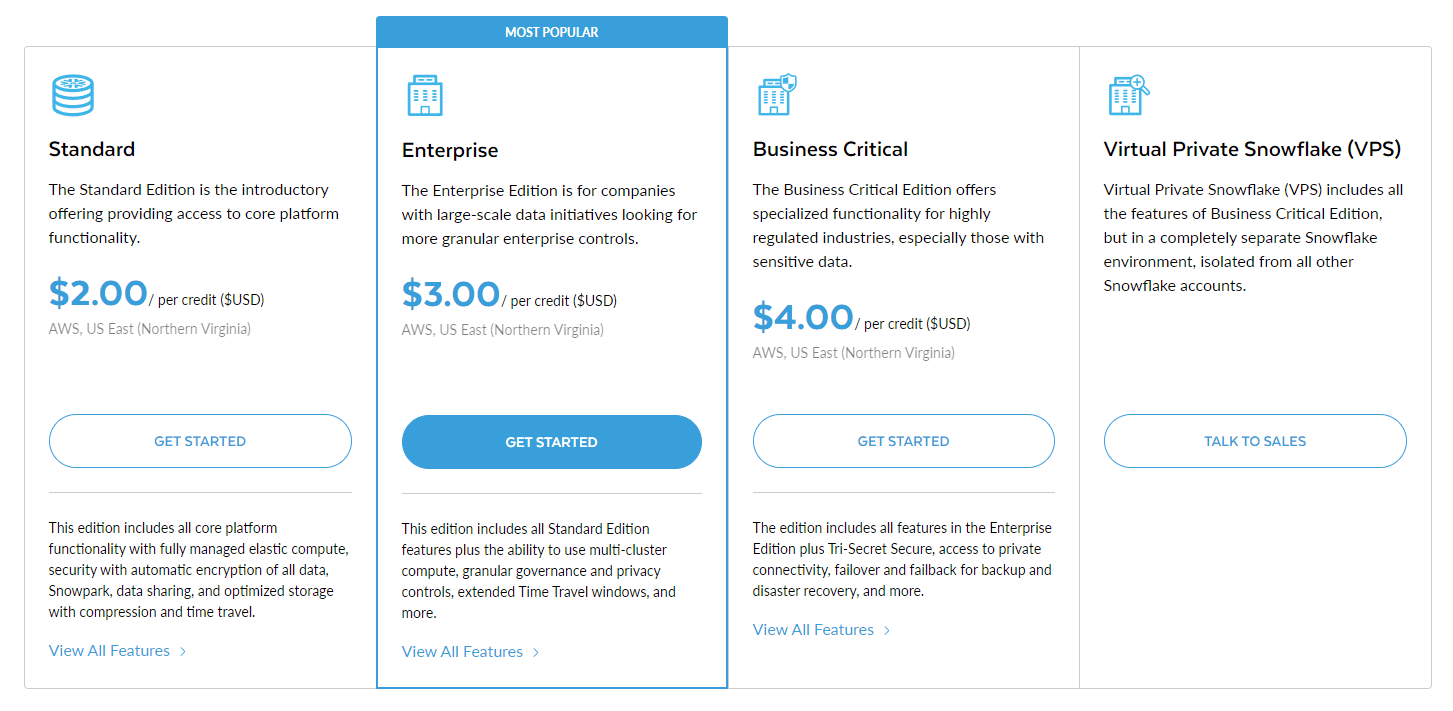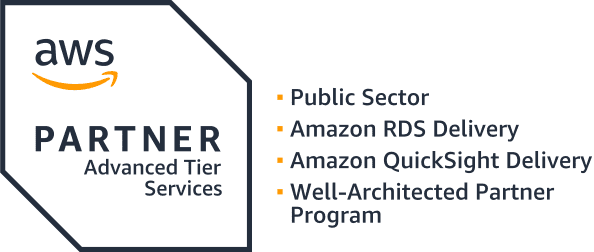What is AWS Snowflake?
AWS Snowflake is not just another data warehousing solution but a pioneering SaaS built specifically for cloud efficiency and scalability. At its core, Snowflake leverages cloud elasticity to offer an incredibly adaptable platform capable of managing vast amounts of data without sacrificing performance. This unique architecture allows Snowflake to provide unlimited and instant scalability — a feature that truly sets it apart in the cloud computing market.
Snowflake’s data stores are designed to support elaborate yet straightforward analytical tools that can scale efficiently with low latency, utilizing the familiar pay-as-you-go model adopted by AWS. This model allows users to pay by the second, with costs associated with three primary factors: storage rates, computational power, and data transfers. These costs are calculated in units known as Snowflake credits, which vary in accrual rates among the different categories and subscription plans.
For users who are newer to AWS, Snowflake does benefit from the AWS Free Tier category of offerings. At any point during the creation of an AWS account, a user can receive a month-long free trial with $400 of credits to spend on Snowflake operations. The trial ends after the allotted period ends and the user hasn’t fully upgraded to a paying account or when the user runs out of credits.
As an advanced AWS partner, we bring unparalleled expertise to architect, deploy, and optimize cloud solutions tailored to your unique needs.
Snowflake Pricing for Storage
Storage is primarily determined by the daily storage size in bytes, regardless of whether the data is compressed, uncompressed, or used as a backup. Snowflake pricing typically applies to a flat TB rate but will continue to fluctuate based on extra factors. Rates will vary more significantly depending on if the user is paying on-demand compared to having pre-purchased the databases. Snowflake doesn’t require upfront payment or contracts. However, pre-purchases will result in significant discounts. These work similarly to the reserved instance offerings provided by other AWS services.
Where users allocate their instances across AWS’ infrastructure can also impact the storage rates Amazon charges. Like most services, transfer rates will differ vastly across most regions globally. Finally, rates can differ depending on the platform Snowflake is allocated to. Though Snowflake works perfectly fine on AWS, it can function natively on Google Cloud and Microsoft Azure with small adjustments in the data transfer fees.

Virtual Warehousing
Managing a Snowflake data warehouse effectively involves understanding the intricate details of its operation and cost management system. Snowflake can employ virtual warehouses with one or multiple compute clusters to conduct queries and data retrievals. Operating virtual warehouses will use Snowflake credits with rates depending on size, duration of use, and the number of units in operation. Currently, there are ten sizes available with specifics for the amount of computing power made available per cluster.
Snowflake provides a cost-effective solution, allowing users to avert expenses through strategic warehouse management. Costs can be minimized by ensuring that warehouses are only operational when necessary, as Snowflake does not charge for idle or suspended resources. To further optimize cost efficiency, Snowflake offers a convenient startup or stop function that enables users to initiate or suspend warehouses, thereby avoiding unnecessary charges swiftly.
Credit use is tied to the number of servers operating within a cluster. Snowflake bills credits per second, though, which requires a minimum of sixty seconds. Starting or terminating an instance will cost a minute’s worth each time, and upgrading or downgrading will cost a minute to finish. However, since Snowflake virtual warehouses work linearly, doubling a warehouse’s capacity will result in half the work time while maintaining the same operating cost.
Individual Service Pricing
Snowflake comes with a package of tools designed specifically for the storage, manipulation, and use of data for extensive computations. Whether it’s API functions, access controls, or infrastructure management, these services expend compute resources and Snowflake credits. However, resources expended need to reach 10% and over the daily compute resource usage before they show up on the monthly bill. If the second value is less than the first value, Snowflake will automatically default to billing the user the second value. If the number of cloud service credits exceeds the adjusted resources used:
Resource Use and Snowflake Billing
Snowflake bills users monthly relative to the resources they have used over that period. These charges are in the form of Snowflake credits, which cover different rates for the subscription plans offered. What could cost $0.00011 on the standard edition will cost $0.005 on the enterprise edition. It is very easy to lose track of what price factors are taking effect.
While managing Snowflake pricing more controllably presents benefits, it is essential to delve deeper into the advantages offered by this pricing model. Snowflake provides users with a range of flexible options, allowing them to tailor their payment plans and instance types to suit their specific needs. Notably, Snowflake closely aligns its charges with actual resource usage, enabling users to start or stop operations almost instantaneously to mitigate the risks of over or underprovisioning. The seamless scalability of resources ensures that computational, storage, and operational requirements can be effortlessly adjusted to meet the users’ evolving needs. Embracing a more detailed understanding of Snowflake pricing empowers users to optimize their resource utilization effectively.
Worth Consideration
Snowflake is worth it for companies seeking to alleviate data cloud bottlenecks through its innovative three-layered architecture and flexible pay-as-you-go pricing model. The platform offers a streamlined approach to data management that enables organizations to optimize their resources efficiently and effectively. By leveraging Snowflake’s capabilities, businesses can enhance their data analytics processes and scale operations without being burdened by upfront costs.
What truly sets Snowflake apart is its ability to free companies from the constraints of on-premises computing and storage. Such a shift not only optimizes operational efficiency but also enhances businesses’ analytical capabilities. The combination of its unique architecture, absence of on-prem requirements, and flexible pricing structure positions Snowflake as a compelling solution for companies aiming to unlock the full potential of their data assets.
Get Started Today!
At AllCode, our mission is to leverage our unique skillset and expertise to deliver innovative, top-tier software solutions that empower businesses to thrive in our world’s rapidly-evolving technological landscape.
Work with an expert. Work with AllCode


